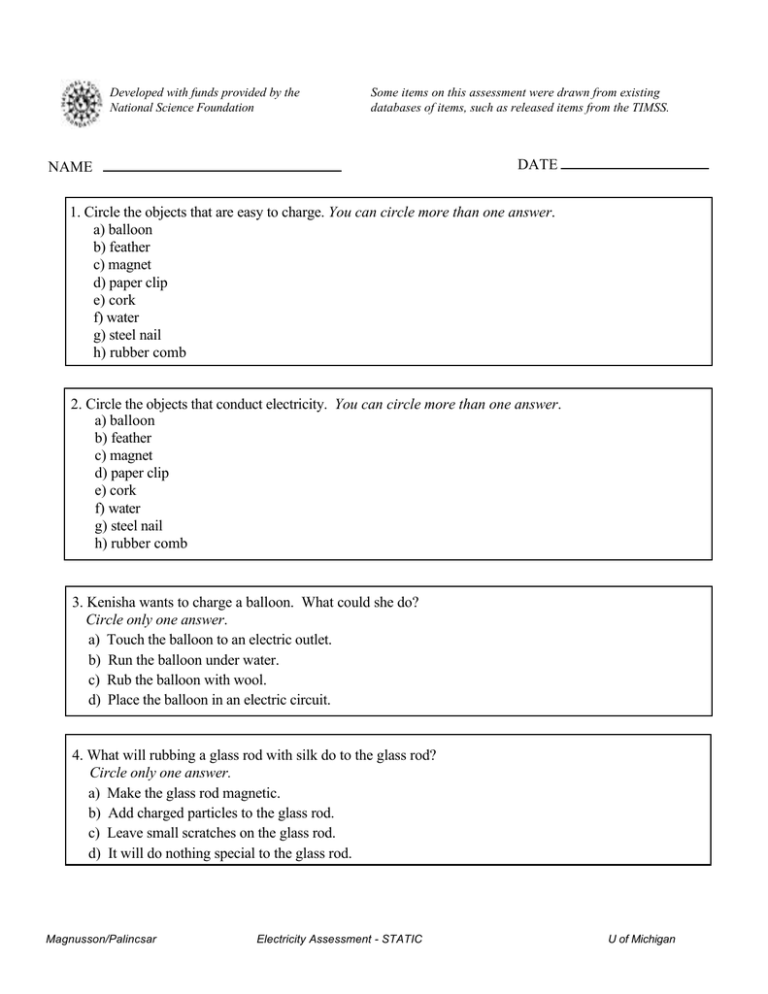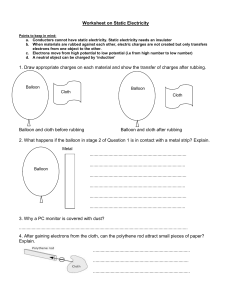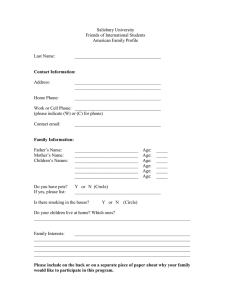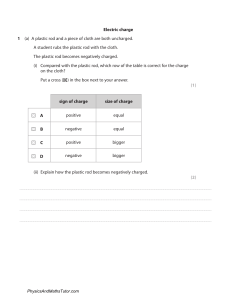NAME DATE 2. Circle the objects that conduct electricity. You can
advertisement

Developed with funds provided by the National Science Foundation Some items on this assessment were drawn from existing databases of items, such as released items from the TIMSS. DATE NAME 1. Circle the objects that are easy to charge. You can circle more than one answer. a) balloon b) feather c) magnet d) paper clip e) cork f) water g) steel nail h) rubber comb 2. Circle the objects that conduct electricity. You can circle more than one answer. a) balloon b) feather c) magnet d) paper clip e) cork f) water g) steel nail h) rubber comb 3. Kenisha wants to charge a balloon. What could she do? Circle only one answer. a) Touch the balloon to an electric outlet. b) Run the balloon under water. c) Rub the balloon with wool. d) Place the balloon in an electric circuit. 4. What will rubbing a glass rod with silk do to the glass rod? Circle only one answer. a) Make the glass rod magnetic. b) Add charged particles to the glass rod. c) Leave small scratches on the glass rod. d) It will do nothing special to the glass rod. Magnusson/Palincsar Electricity Assessment - STATIC U of Michigan When Bernard hung two balloons from the ceiling of his room they moved away from each other. 5. What does this observation tell Bernard about the balloons? Circle only one answer. a) They are oppositely charged. b) They have the same charge. c) They are magnetic. d) They are not charged. 6. Which set(s) of rods in the drawing would be attracted to each other? You can choose more than one answer. + +++ + + + ++ + + ++ + a) -- -- -- - -- -- - -- b) + +++ + + + ++ + + ++ + + - + +- + - + -+ - - + - c) -- - -- -- - -- -- -- + - + +- + - + -+ - - + - d) ++- + +- + -+ - - -+- + - + +- + - + -+ - - + - The drawing shows a block and a piece of cloth. Both are neutral (not charged). - + -- + - + - + ++ - + + - +- + + - + + - + + + + + - 21. What might happen if the block is rubbed with the cloth? You can choose more than one answer. a) Negative particles move from the block to the cloth. b) Negative particles move from the cloth to the block. c) Positive particles move from the block to the cloth. d) Positive particles move from the cloth to the block. Magnusson/Palincsar Electricity Assessment - STATIC U of Michigan



